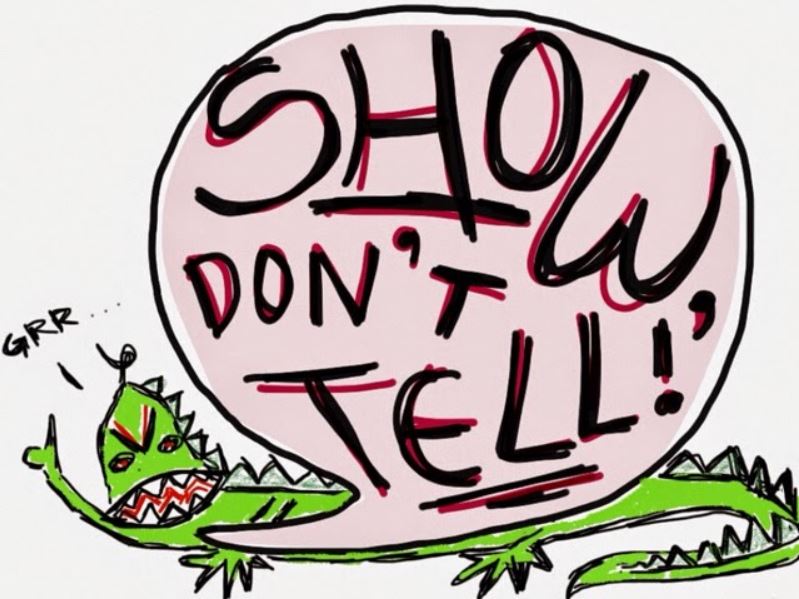You’ve heard it before, a thousand times, from the instant you decided to write: Show, don’t tell! That snarky little catchphrase that seems to haunt your every edit. You could have sworn you were showing in that last draft, but upon rereading...nope, you were telling. And telling. And telling. And now you feel like you’re the worst writer in the world and so why should you even bother??!
Anyone else kind of want to pull their hair out when things get like this?
I know I do. Which, I realize, does not make me the most expert of writers to preach upon such a subject. But I’ve had this three-word stalker crouching behind me for a significant chunk of years now, so I've collected a few thoughts about it. Some ways to avoid it’s breathy snarl. Because, honestly, when I first started hearing it, I had no flipping clue what these people were talking about.
Here’s some ideas on how to figure out what people mean when they throw this at you like a pitchfork in the middle of your writing group.
#1: READ (GOOD) FANTASY NOVELS.
Not into fantasy? First of all: Ima just pretend you didn’t say that. Second of all: Fantasy novels (good ones) are the unsung heroes of the show-don’t-tell battalion. No kidding. You know why? It boils down to one single hyphenated word, the word which all great fantasy novels are based upon: world-building.
Granted, every story requires world-building. But stories based in a fantasy world have less of a crutch to lean on because no one's ever seen their world before. One of my favorite examples of world-building is The Golden Compass. Read that book, and observe how much you know about this strange new world by the first couple chapters. Then try, just try, to find an exposition paragraph. I’ll save you some time: You can’t. All the description is embedded in the action, and that’s the basis of show-don’t-tell.
While you’re writing, see if you can explain your world through an action, rather than a straight-up description. It’s almost always more engaging to the reader.
#2: CONSIDER HOW WORDS SOUND -- NOT JUST WHAT THEY MEAN (See: Poetry).
If you really must have a descriptive sentence (and you will at some point—see #3), use every aspect of every word to your end. That is, consider the way words sound, not just what they mean. Reading your work out loud can help in this regard. Notice the difference between the following two sentences:
“The forest air was crisp and cool with the scent of fallen leaves.”
“The wood was chilled with the musky smell of rotting branches.”
A quick little sentence, yes, but it serves to show you what I’m saying (see what I did there?). Each describes a cold autumn day in a forest. One is hopeful and pleasant, the other heavy and foreboding—the same setting communicates two very different moods.
#3: DON'T LET THIS THREE-WORD MONSTER CRIPPLE YOU.
As a writer, it can be easy to become so obsessed with this (albeit important) mantra that we literally don’t allow ourselves to tell the reader anything. Nothing! Ever! Everything must be action all the time and everything must be a picture! A perfect picture of my perfect story-world that you will see and hear and feel BUT NEVER TELL SHHHH DON’T TELL IT’S A SECRET.
First of all, calm down. Of course you don’t want to get stuck in always telling, but you also don’t want your writing to be dominated by this one rule. There are lots of rules to writing. Most of them will be broken by most writers. Good writers know when it’s the right time to do the breaking. So chill out, get your butt in the chair, and write. Show me a story.
And if you end up telling me a story? Well, fine, at least you wrote it. That’s what editing is for.

